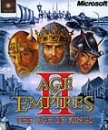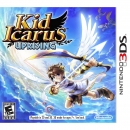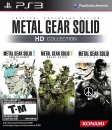CVG
Way back in January, Xbox World revealed everything its sources had to say about the next Xbox, from CPU specs to details on the bizarre augmented reality glasses you'll likely be using in late 2014. Six months later, a leaked Microsoft document confirmed it all.
It's fair to say Xbox World has been at the cutting edge of Durango coverage for over 12 months, and now, ahead of its final issue, their huge "everything we know" feature does its best to expose Microsoft's next-gen console plans.
The final issue of Xbox World goes on sale Wednesday, December 12. You can still buy issues of Xbox World online or via Apple Newsstand here (UK) or here (US).
THE 14 GAME-CHANGING FEATURES OF XBOX 720
Words: Xbox World issue 125, November 2012
 Microsoft never "comment on rumour or speculation", so we turned to a panel of industry experts and asked them about the most hotly rumoured features of the next Xbox - Kinect 2.0, Blu-ray, a quad-core CPU, 8Gb of RAM, directional audio, a TV output and input, the customisable controller and those incredible AR specs.
Microsoft never "comment on rumour or speculation", so we turned to a panel of industry experts and asked them about the most hotly rumoured features of the next Xbox - Kinect 2.0, Blu-ray, a quad-core CPU, 8Gb of RAM, directional audio, a TV output and input, the customisable controller and those incredible AR specs.
Don't expect the next Xbox to be called Xbox 3 or Xbox 720. Apple has changed the rules on branding, so when the next generation arrives it'll almost certainly just be 'Xbox'. That part is speculation, but everything else you're about to read has come from industry experts and from Microsoft's own leaky boat.
The next Xbox will hit shelves in November 2013 and the best developers in the world are already working on it. Rare has Kinect Sports 3, Bungie has Destiny, Lionhead has the long-rumoured Fable MMO, 343 has Halo 5, DICE has Battlefield 4, and Turn 10 has Forza 5, and you won't have to wait long to see them.
Unless something really dramatic changes, everything you see here will be revealed long before June's E3 conference, at Microsoft's annual 'X' showcase in February or March next year. The next-generation countdown starts now...
MASSIVE POWER
 Microsoft's 'Durango' development kits are already in developers' hands, and the CPU at the heart of the machine is a monster. Where 360 has a three-core CPU from 2005, Durango promises four hardware cores, each divided into four logical cores - a spec greater than anything even the most hardcore PC gamer has on his desktop.
Microsoft's 'Durango' development kits are already in developers' hands, and the CPU at the heart of the machine is a monster. Where 360 has a three-core CPU from 2005, Durango promises four hardware cores, each divided into four logical cores - a spec greater than anything even the most hardcore PC gamer has on his desktop.
"On paper the 360's specs are still fairly respectable," says Matt Ployhar, senior product planner on Nvidia's Consumer Applications Product Team. "It has three cores clocked roughly at 3.2Ghz each, and the newer 360s have a 45nm chip using less power. However, it's not until you really start digging that the bigger advancements that have been made in CPU architectures start becoming more apparent.
 Xbox World's mock-up of what it expects the next-gen Xbox to look like. "The future will be black, sharp and curved.""Today, a 'next-gen' console would likely want to use the latest and greatest architecture it could in order to sustain itself over another five to ten year time frame.
Xbox World's mock-up of what it expects the next-gen Xbox to look like. "The future will be black, sharp and curved.""Today, a 'next-gen' console would likely want to use the latest and greatest architecture it could in order to sustain itself over another five to ten year time frame.
"Specifications-wise, we'd end up with a 22-28nm chip, another processing core at roughly the same clock speeds, a cache that is not only faster but four times bigger, six times the number of transistors; all while keeping in the same ballpark or better for power constraints. That's not too shabby, and it doesn't even begin to cover the fact graphics can occupy space on that same physical die and easily match current-generation graphics performance."
PUTTING THE POWER TO WORK
 So you've got all this extra power... what can you do with it? "We can simulate more things and simulate those things better," says Simon Mack, chief tech man at Naturalmotion - the Cambridge-based studio behind GTAIV's physics.
So you've got all this extra power... what can you do with it? "We can simulate more things and simulate those things better," says Simon Mack, chief tech man at Naturalmotion - the Cambridge-based studio behind GTAIV's physics.
"You get more physics, you get better fidelity. We can expect to see more simulated characters and richer worlds. We can start to look at having more complex characters under simulation with more complex interactions, and can add more things - hair and cloth and that sort of thing. This all helps to increase believability.

"Right now, game environments are generally restricted to straightforward simulated objects. Having a greater level of physical simulation means you can have more detailed interaction with it. At its most basic, how about destruction? Destruction of objects, of cloth, and soon... That means your character can affect the world in a more detailed and interesting way, as well as have the world affect the character.
"As you up the number of possible interactions in the game, it becomes harder to manage the gameplay. That's the challenge many developers will face, but we think that will benefit gameplay in coming years."
KINECT 2.0
 Kinect 2.0 tracks up to four players and can read even the smallest movements of your fingers thanks to advancements in the camera technology and the additional processing grunt, rumours suggest, but there are other Microsoft technologies which will feed into the next generation of Microsoft's often dubious motion sensor.
Kinect 2.0 tracks up to four players and can read even the smallest movements of your fingers thanks to advancements in the camera technology and the additional processing grunt, rumours suggest, but there are other Microsoft technologies which will feed into the next generation of Microsoft's often dubious motion sensor.
"For the last couple of years we have explored how to use depth-sensing cameras to enable interactions on surfaces in the environment," says Microsoft researcher Hrvoje Benko.
His device, Omnitouch, turns any surface into an interactive touch screen using a projector or - potentially - augmented reality specs. "Coupled with a pico projector, one can turn anything into an interactive surface. It's possible to track fingers in mid-air and reason about their collisions with other objects, thus simulating the multi-touch interactions from smartphones and slates."
Coupled with a miniature projector and Benko's tech, the next Xbox could project a board game right onto your coffee table or give you a virtual keyboard at any time. But even that's thinking small compared to what Microsoft has in mind...
AUGMENTED REALITY
 Microsoft's leaked planning document detailed plans to turn the next Xbox into a full augmented reality system with a new peripheral planned for 2014. The new AR specs would work alongside Kinect or Omnitouch to turn your living room into a virtual reality environment in which game characters could appear, and even interact with objects in the real world.
Microsoft's leaked planning document detailed plans to turn the next Xbox into a full augmented reality system with a new peripheral planned for 2014. The new AR specs would work alongside Kinect or Omnitouch to turn your living room into a virtual reality environment in which game characters could appear, and even interact with objects in the real world.
 "Most of the time, we don't directly pursue the productisation and miniaturisation steps, but on demonstrating the capabilities of the technology," says Omnitouch researcher Hrvoje Benko. "But I see no reason Omnitouch couldn't eventually end up in a pair of glasses. I'm very hopeful that within a few years we'll see more augmented reality technologies in widespread use.
"Most of the time, we don't directly pursue the productisation and miniaturisation steps, but on demonstrating the capabilities of the technology," says Omnitouch researcher Hrvoje Benko. "But I see no reason Omnitouch couldn't eventually end up in a pair of glasses. I'm very hopeful that within a few years we'll see more augmented reality technologies in widespread use.
"I see many opportunities, ranging from simply translating the existing games to make them work on many other non-digital surfaces, to completely new games that leverage your personal view, location, body or environment to create more compelling games. In our Beamatron project, we have already demonstrated driving virtual RC cars around a living room, making jumps off a couch, and behaving just like a real car."
The next Xbox could do something as small as place Master Chief's HUD right in front of your eyes, or even bring the action off the screen right into your living room.
3D SOUND
 Augmented reality is powerful, but to build a real virtual world you'll want characters who appear to speak to you with location-specific audio. Impossible? Nope; the technology already exists for specialists.
Augmented reality is powerful, but to build a real virtual world you'll want characters who appear to speak to you with location-specific audio. Impossible? Nope; the technology already exists for specialists.
"The effect of 3D sound is astonishing," says Tuyen Pham, CEO of A-Volute: 3D Sound Projects. "You're in the axis of the speaker and you hear sound; you move your head a little bit and the sound disappears. The hardware components in our technology are still too expensive to be used in consumer products, though with mass production having a device on top of or under your TV set can be something accessible for a major brand."
"After checking with our legal department, I can't disclose anything"Microsoft are that major brand, and Microsoft Research has already demonstrated its own directional sound prototype - a rack of 16 speakers all working together to 'project' sound into a small area.
Coupled with Kinect head-tracking, the speakers could project audio only you can hear, making headphones a thing of the past. Might the tech be intended for the next Xbox? We put the idea to Pham, who has some ideas about how it could work.
"The consumer device looks like a 10x20cm panel with a thickness of one centimetre. It could be placed anywhere, and I think the application of such technology for game consoles is clear. However, after checking with our legal department I can't disclose that. We're working with a gaming company but the information I could give is under NDA..."
BLU-RAY AND BEYOND
 The next Xbox should ship with a Blu-ray drive as standard, allowing for games up to 50Gb on a single disc without PS3's current problems with the tech - namely slow seek times and increased loading times in game. Modern Blu-ray drives are faster than their 2006 equivalents, and Microsoft will use the latest tech it can source at a sensible price.
The next Xbox should ship with a Blu-ray drive as standard, allowing for games up to 50Gb on a single disc without PS3's current problems with the tech - namely slow seek times and increased loading times in game. Modern Blu-ray drives are faster than their 2006 equivalents, and Microsoft will use the latest tech it can source at a sensible price.
 One rumour is that the first 'slim' version of the next Xbox will drop the optical drive altogetherin favour of a download-only platform scheduled for 2015. The 'slim' Xbox, if it comes to pass, would be scheduled for a post-disc world where broadband speeds and network caps have advanced to the point that a 20-30Gb download would be manageable on even an average home connection.
One rumour is that the first 'slim' version of the next Xbox will drop the optical drive altogetherin favour of a download-only platform scheduled for 2015. The 'slim' Xbox, if it comes to pass, would be scheduled for a post-disc world where broadband speeds and network caps have advanced to the point that a 20-30Gb download would be manageable on even an average home connection.
For now, the UK's broadband isn't up to the job and it's not alone; online video provider Netflix recently deemed Canada a third world country when it comes to broadband. There are only a few PC and console games which go over 25Gb - the bigger PS3 games tend to duplicate data on the disc to reduce seek times - but expect games to grow big enough to fill Blu-rays as the next generation matures.
DIRECTX 11
 "It's a safe bet that the next Xbox is going to be DirectX 11 capable," says Nvidia's Matt Ployhar. DX11 is Microsoft's own programming interface which unlocks impressive next-generation effects in modern PC games. "We're all in store for some amazing treats graphically when the next round of games start ramping up to really exploit DirectX 11 by default in both the console and PC versions."
"It's a safe bet that the next Xbox is going to be DirectX 11 capable," says Nvidia's Matt Ployhar. DX11 is Microsoft's own programming interface which unlocks impressive next-generation effects in modern PC games. "We're all in store for some amazing treats graphically when the next round of games start ramping up to really exploit DirectX 11 by default in both the console and PC versions."
 Battlefield 3 on PC is already far beyond its current-gen console equivalent"We're only seeing the tip of the iceberg on PC right now, but already I think most console gamers will be amazed by what they're actually missing out on. Batman: Arkham City, Battlefield 3,Crysis 2, Colin McRae: Dirt 3 and Stalker: Call of Pripyat are just a taste of what's to come, and in order to see most of that eye candy you really have to dial things up beyond what the current consoles are capable of.
Battlefield 3 on PC is already far beyond its current-gen console equivalent"We're only seeing the tip of the iceberg on PC right now, but already I think most console gamers will be amazed by what they're actually missing out on. Batman: Arkham City, Battlefield 3,Crysis 2, Colin McRae: Dirt 3 and Stalker: Call of Pripyat are just a taste of what's to come, and in order to see most of that eye candy you really have to dial things up beyond what the current consoles are capable of.
"That means higher resolutions, sharper textures, more anti-aliasing, tessellation etc. It's hard to describe, but check out Epic's Samaritan demo and this year's Unreal 4 demo. A good part of these game engine technologies will trickle down into the next console generation."
A NEW MICROSOFT
 Microsoft needs to respond to Xbox Live's biggest problems: the ones that hit developers first then gamers second. Indie dev Phil Fish decided against patching Fez because patching on Xbox is a $10,000 job - too much for most small developers.
Microsoft needs to respond to Xbox Live's biggest problems: the ones that hit developers first then gamers second. Indie dev Phil Fish decided against patching Fez because patching on Xbox is a $10,000 job - too much for most small developers.
 Live's big problems come from Microsoft's side, and the next-generation Xbox will require a friendlier Microsoft if it's to become home to games like Valve's ever-evolving shooterTeam Fortress 2 or multiplayer battle arena League of Legends - the biggest game in the world, and one which grows with its player base.
Live's big problems come from Microsoft's side, and the next-generation Xbox will require a friendlier Microsoft if it's to become home to games like Valve's ever-evolving shooterTeam Fortress 2 or multiplayer battle arena League of Legends - the biggest game in the world, and one which grows with its player base.
"For a competitive multiplayer title like ours, it's important to react fast to the player base and address exploits," says Monday Night Combat's Chandana Ekanayake. "But our first patch took 35 days and our first DLC took 34 days before it went live after we sent it to Microsoft. For our PC beta of Monday Night Combat, we did 30 updates on a weekly basis, and sometimes even twice a week."
"On 360, Ubisoft and all the other publishers out there have to choose whether it's worth the costs associated with putting out a title update," says Ubisoft's Stuart White, producer on Ghost Recon. "It's an easy decision if a new feature will take a week to make and generate an extra 30,000 sales, but it's more difficult when it's going to take three months. Then you start getting into a cost/benefit analysis situation."
Cheaper and easier patching will open games up to better downloadable content and more creative ideas from developers. "And cutting down on all that red tape? Yeah, of course I'd like that," says White. "There's a lot of forms you have to fill out... you need to get a specific identification number before you can submit your DLC, and sometimes you don't even know where to go to find that number."
NEXT GENERATION CONTROLS
 Rumours suggest Microsoft's next controller is still in the prototype stages with some models featuring touch screens and others featuring programmable buttons. Controller technology has changed enough in the last seven years to make the next Xbox controller a radically different device says Min-Liang Tan, CEO of gaming peripheral firm Razer.
Rumours suggest Microsoft's next controller is still in the prototype stages with some models featuring touch screens and others featuring programmable buttons. Controller technology has changed enough in the last seven years to make the next Xbox controller a radically different device says Min-Liang Tan, CEO of gaming peripheral firm Razer.
 "In 2005 the 360 controller was a big improvement from the original Xbox controller in terms of ergonomics and durability, and Microsoft made huge improvements with their morphing D-pad. I think the next development will be adding buttons gamers can map freely for individual customisation," he says.
"In 2005 the 360 controller was a big improvement from the original Xbox controller in terms of ergonomics and durability, and Microsoft made huge improvements with their morphing D-pad. I think the next development will be adding buttons gamers can map freely for individual customisation," he says.
That means your friend who insists on playing Halo with Greenthumb and an inverted stick won't have to mess around in the menus when you pass the pad.
"We haven't looked into how much it would cost to build a touch screen controller at Razer, but I imagine it would be quite expensive. Anywhere upwards of $99-$150 would be my best bet," similar to Nintendo's price tag for its Wii U controller, then. "There are a lot of things you can imagine doing with a secondary screen, though when playing on a console the gamer's eyes are focused on the TV and the distance to the controller is quite large, so that's a problem.
"Controller technology has advanced so far, Microsoft could take it anywhere. Maybe it could withstand rage-quitting throws because it's made of Kevlar fibres, or have flexible material that morphs to gamers' hand shapes, like a built-in stress ball for when you lose a round online."
CLOUD GAMING
 In the same leaked document which set out the five-year roadmap for the next generation of Xbox, Microsoft listed cloud gaming provider Onlive as an acquisition target. Onlive's service let players stream games over the internet for a monthly fee with minimal lag, but the company went bankrupt in August and Microsoft didn't opt to buy. Instead, it hosted a mixer for Onlive's staff on August 27, with the aim of 'adding key players who want to make a real impact in creating groundbreaking new products and services'.
In the same leaked document which set out the five-year roadmap for the next generation of Xbox, Microsoft listed cloud gaming provider Onlive as an acquisition target. Onlive's service let players stream games over the internet for a monthly fee with minimal lag, but the company went bankrupt in August and Microsoft didn't opt to buy. Instead, it hosted a mixer for Onlive's staff on August 27, with the aim of 'adding key players who want to make a real impact in creating groundbreaking new products and services'.
Sony already has its own cloud gaming provider, having dropped $380 million (£237m) on Gaikai, with the intention of bringing Gaikai's cloud streaming tech to PlayStation.
Microsoft usually prefers to build from scratch whenever it can, so expect Microsoft's home-grown effort to appear on the next-gen Xbox and every other device you own, effectively turning your phone, TV, PC and tablet into an extension of your console. Any device could become a host for your games and your saves, played locally on the next Xbox or streamed straight from Microsoft's cloud.
LIVE 3.0: NEW USER FEATURES
 The next Xbox should introduce a new version of Live, with better support for social networking and free-to-play or subscripton-based games. Those are essentials, but online developers have ideas too.
The next Xbox should introduce a new version of Live, with better support for social networking and free-to-play or subscripton-based games. Those are essentials, but online developers have ideas too.
 "Microsoft has the best digital distribution network on a console with Xbox Live, but it's not very flexible in the rapidly changing environment," says Chandana Ekanayake, executive producer on Monday Night Combat at Uber Entertainment.
"Microsoft has the best digital distribution network on a console with Xbox Live, but it's not very flexible in the rapidly changing environment," says Chandana Ekanayake, executive producer on Monday Night Combat at Uber Entertainment.
"I'd like to see better discoverability for games on the Dashboard, as well as faster methods of updating a game with more control given to the developer. Removing the 100-friend limit is a must, and Microsoft have to better integrate Xbox Live features across multiple platforms, whether it be console, mobile, tablet or desktop PC."
"I think that increasing the size of the Friends List only helps," says Ubisoft's Stuart White, PvP producer on Ghost Recon Future Soldier. "If you raise that cap, then more people can share what they're playing. And I would love to see a hard drive for all models of the next generation of Xbox so we can do what we can do on the PS3. We're currently limited at times when it comes to the amount of information we can push in a title update or DLC."
TOTAL MULTIMEDIA
 With the latest version of the 360's Dashboard, Microsoft has already taken steps to turn the Xbox into a complete hub for their own music and TV services. "I think with the next-generation Xbox we'll see a shift towards Microsoft tightly integrating the software and services that power Windows Phone and Windows 8," says The Verge's senior editor, Tom Warren.
With the latest version of the 360's Dashboard, Microsoft has already taken steps to turn the Xbox into a complete hub for their own music and TV services. "I think with the next-generation Xbox we'll see a shift towards Microsoft tightly integrating the software and services that power Windows Phone and Windows 8," says The Verge's senior editor, Tom Warren.
"The end result will likely be a greater focus on presenting Skype and Kinect as a competitor to Apple's FaceTime, and Xbox Music to take on Amazon and Apple's iTunes."
Microsoft's leaked doc hints at an 'always on' console. Taken to its logical extreme, imagine your next Xbox taking the place of your Sky+ box, with a TV input and output. What if saying "Xbox BBC 2" or tapping a button on your mobile phone's SmartGlass app let you change channels or record video straight through your console?
"Microsoft has a strong footing in the living room right now, primarily from Xbox 360 and Kinect, and SmartGlass is a clear play by Microsoft to control the living room with its content partners," says Warren. "The cross-platform support will aid it in the short and long term."
THE USER INTERFACE

 Metro is far from a perfect user interface, as this featurepoints out, but Metro is here to stay and will be the way you interact with Windows 8, Windows Phone and the next-generation Xbox.
Metro is far from a perfect user interface, as this featurepoints out, but Metro is here to stay and will be the way you interact with Windows 8, Windows Phone and the next-generation Xbox.
"Microsoft's Andy Lees commented during the 2011 Worldwide Partner Conference that the company wants to provide a consistent experience across all of its products, including Xbox," says Tom Warren, tech expert and senior editor on The Verge.
"It's clearly an important piece of Microsoft's future, and the company is even using it across their new Outlook mail system and the next version of Microsoft Office. I think you'll have to keep an eye on Windows 8 to see how that influences Xbox."
A more precise Kinect means smaller tiles and more content available on each 'page' of the dash, but Windows 8's Metro interface is already proving unpopular, so Microsoft will have to take a year of feedback into account when the latest version of Metro hits the next Xbox.
ALWAYS-ON GAMING
 However, Microsoft's most powerful feature for next-generation Xbox might be... no switching off. The next Xbox should be an always-on console where key games will be ready to go at a moment's notice.
However, Microsoft's most powerful feature for next-generation Xbox might be... no switching off. The next Xbox should be an always-on console where key games will be ready to go at a moment's notice.
Throughout the leaked planning document Microsoft constantly references "multiple experiences at once or on their own", be that via Cloud streaming to multiple devices, games with rich online content, or actually using your Xbox to switch between media.
Microsoft wants the kind of speed you get from a mobile device but on the big screen - breaking down the barriers between players and the games, switching between Kinect Sports 3 and Halo 5 as easily as you'd change channels on your TV.
You can't remove loading times altogether so long as games need to load in new assets, but by keeping certain games pre-loaded you can have your favourite titles ready to go at a moment's notice. That takes a lot of power and a lot of RAM - 8Gb of it, rumours suggest. There's no reason a high-end game can't flush the memory to squeeze in huge textures and big worlds, but other games will use memory for always-on gaming.
Apple's iOS has changed things for Sony and Microsoft, and the next gen might be defined as much by immediacy and accessibility as it is by huge worlds, high end graphics and revolutionary online play.


















































































